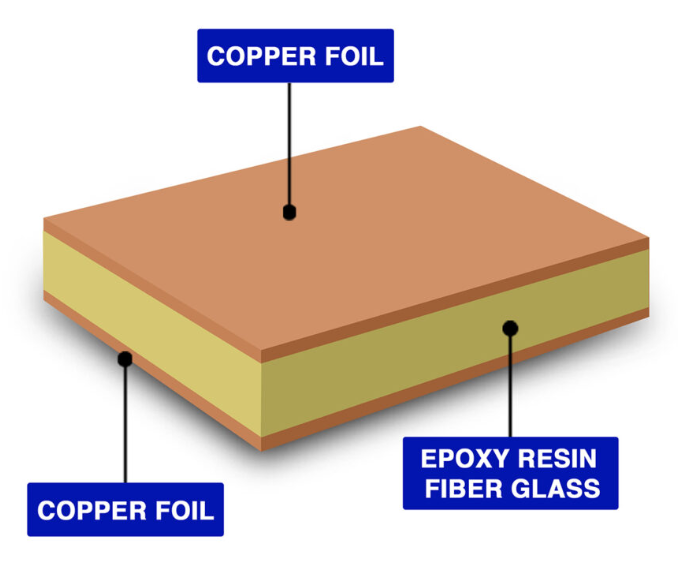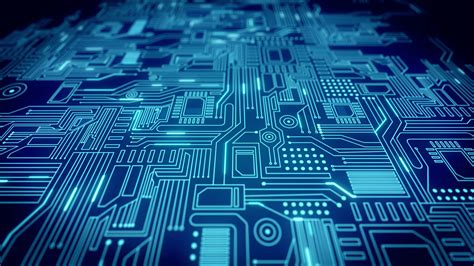Is FR-4 the Best PCB Material Choice for High-Speed Design?
Introduction
For decades, FR-4 has been the workhorse material of the printed circuit board (PCB) industry, serving as the default substrate for countless electronic devices across all market segments. Its popularity stems from an excellent balance of mechanical, electrical, and thermal properties combined with relatively low cost and widespread availability. However, as digital systems push into the multi-gigahertz range with ever-faster edge rates, many designers are questioning whether FR-4 remains the optimal choice for high-speed PCB applications.
This article examines FR-4’s suitability for high-speed design by analyzing its material properties, comparing it with alternative substrates, and providing practical guidance for modern high-frequency applications. We’ll explore where FR-4 performs adequately, where it falls short, and what design strategies can compensate for its limitations.

Understanding FR-4 Material Properties
FR-4 (Flame Retardant 4) is a composite material composed of woven fiberglass cloth impregnated with an epoxy resin binder. The “FR” designation indicates its flame-retardant properties, while the “4” refers to the woven glass reinforcement. To evaluate its high-speed performance, we must examine several key characteristics:
Dielectric Constant (Dk)
FR-4 typically has a dielectric constant ranging from 4.3 to 4.8 at 1 MHz, with variations depending on the specific formulation and glass-to-resin ratio. More critically for high-speed design, FR-4’s Dk exhibits frequency dependence, decreasing by 10-15% as frequency rises from 1 MHz to 10 GHz. This variability complicates impedance control in broadband applications.
Dissipation Factor (Df)
The dissipation factor (loss tangent) of standard FR-4 measures about 0.02 at 1 GHz, significantly higher than specialized high-frequency materials. This translates to greater dielectric losses at microwave frequencies, potentially limiting signal integrity in long traces or high-speed serial links.
Thermal Properties
FR-4 has a glass transition temperature (Tg) typically between 130°C and 180°C, with higher-Tg versions available. Its coefficient of thermal expansion (CTE) is approximately 14-17 ppm/°C in the x-y plane and 50-70 ppm/°C in the z-axis, which can cause reliability concerns in demanding thermal environments.
Moisture Absorption
Standard FR-4 absorbs 0.1-0.3% moisture by weight in humid environments, which can affect both electrical properties and mechanical stability. High-Tg and low-loss variants generally exhibit lower moisture absorption.

Challenges of FR-4 in High-Speed Applications
As signal frequencies exceed 5 GHz and rise times fall below 100 ps, several FR-4 limitations become apparent:
Dielectric Losses
The relatively high dissipation factor of FR-4 causes significant attenuation at microwave frequencies. For a 10-inch trace at 10 GHz, losses can exceed 3 dB, potentially rendering the signal unusable without equalization. This becomes particularly problematic for long backplane connections or high-speed serial interfaces like PCIe Gen4/5 or DDR5.
Impedance Control Difficulties
The frequency-dependent Dk of FR-4 makes consistent impedance matching challenging across wide bandwidths. Variations in glass weave pattern can also cause localized impedance fluctuations, leading to signal integrity issues like increased jitter.
Skin Effect and Copper Losses
While not unique to FR-4, the skin effect becomes more pronounced at high frequencies, with current crowding near the conductor surface increasing effective resistance. Rough copper surfaces typical of standard FR-4 laminates exacerbate this effect.
Multilayer Stackup Challenges
High-speed designs often require complex multilayer stackups with tight impedance tolerances. FR-4’s variability in thickness and dielectric properties can make these stackups more difficult to control compared to specialized materials.
FR-4 Alternatives for High-Speed Design
When FR-4’s limitations become prohibitive, several alternative materials offer improved high-frequency performance:
Rogers RO4000 Series
These ceramic-filled hydrocarbon laminates offer stable Dk (3.3-3.5) with low loss (Df ≈ 0.0027 at 10 GHz). They’re compatible with standard FR-4 manufacturing processes while providing superior high-frequency performance.
Isola I-Speed
A modified epoxy system designed as a “drop-in” FR-4 replacement with lower loss (Df ≈ 0.008 at 10 GHz) and better Dk stability. Costs less than PTFE-based materials while offering noticeable improvements over standard FR-4.
PTFE-Based Materials (Rogers RT/duroid, Taconic RF-35)
Polytetrafluoroethylene (PTFE) substrates offer extremely low loss (Df as low as 0.0009) and stable Dk, but at significantly higher cost and with more challenging manufacturing requirements.
Hybrid Approaches
Many designs use FR-4 for most layers while incorporating high-performance materials for critical high-speed sections, balancing cost and performance.

Design Techniques to Improve FR-4’s High-Speed Performance
When FR-4 must be used for cost or availability reasons, several design strategies can mitigate its limitations:
Careful Stackup Design
Optimizing layer arrangement can minimize signal integrity issues. For example, placing critical high-speed signals on thinner dielectrics reduces dielectric loss impact.
Glass Weave Selection
Some manufacturers offer FR-4 with spread glass weaves that reduce localized Dk variations. These can improve signal integrity for very high-speed signals.
Surface Roughness Control
Specifying low-profile copper or treated surfaces can reduce conductor losses at high frequencies.
Equalization Techniques
For serial links, transmitter/receiver equalization can compensate for FR-4’s frequency-dependent losses.
Length Matching and Differential Pair Optimization
Meticulous layout practices become even more critical when working with FR-4’s limitations.

Cost-Benefit Analysis
The decision to use FR-4 or upgrade to a high-performance material involves multiple factors:
Material Costs
Specialized high-frequency materials can cost 5-10 times more than FR-4, with PTFE-based laminates at the top end. However, the material cost represents only part of the total PCB expense.
Manufacturing Considerations
Most PCB fabricators are highly experienced with FR-4 processing, potentially reducing yield issues. Some high-performance materials require specialized drilling, plating, or lamination processes.
System-Level Tradeoffs
Using FR-4 might require additional design effort or limit performance margins, while premium materials could enable simpler designs or higher performance.
Volume Effects
For high-volume production, even small per-unit cost differences become significant, making FR-4 more attractive if it meets requirements.
Case Studies and Practical Examples
5-10 GHz Networking Equipment
Many mid-range networking products successfully use FR-4 or enhanced FR-4 variants for designs operating up to 10 GHz, particularly when trace lengths are kept short.
DDR4 Memory Interfaces
FR-4 remains widely used for DDR4 designs up to 3200 MT/s, though higher-speed DDR5 implementations often benefit from improved materials.
Automotive Radar (77 GHz)
At these frequencies, FR-4 is generally unsuitable, with most designs requiring specialized high-frequency laminates.
Future Trends in PCB Materials
The PCB material landscape continues to evolve:
Improved FR-4 Variants
Material scientists are developing enhanced FR-4 formulations with lower loss and better high-frequency stability while maintaining cost advantages.
Nanostructured Materials
Emerging materials incorporating nanoparticles or other nanostructures promise better performance characteristics.
System-in-Package Alternatives
For some applications, advanced packaging techniques may reduce reliance on PCB materials altogether.
Conclusion: Is FR-4 the Best Choice?
The answer depends entirely on the specific application requirements:
FR-4 remains an excellent choice for:
- Designs below 5 GHz with moderate loss requirements
- Cost-sensitive projects where performance margins allow
- Applications where manufacturing familiarity outweighs material drawbacks
Consider alternative materials when:
- Operating above 5-10 GHz with critical signal integrity needs
- Designing very long traces or backplanes
- Extreme thermal or environmental conditions exist
- Performance margins are tight and material costs are a small portion of total system cost
For many applications falling between these extremes, hybrid approaches using FR-4 for most layers with selective use of high-performance materials for critical signals often provides the optimal balance of performance and cost.
Ultimately, while FR-4 may not be the absolute best material for all high-speed designs, its versatility, cost-effectiveness, and continuous improvement ensure it will remain a viable option for many high-speed applications for years to come. The prudent designer must carefully evaluate each project’s specific requirements against FR-4’s capabilities and limitations to make the appropriate material selection.






